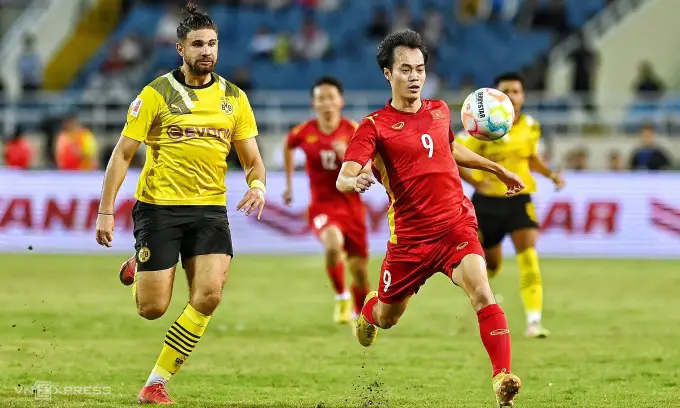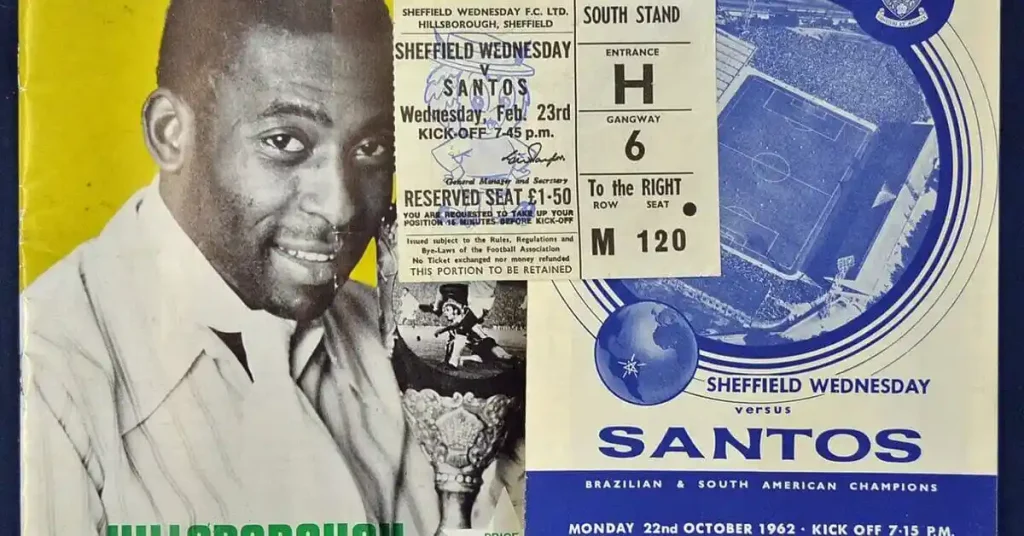In modern football friendlies very rarely have any real fanfare to them. They are simply a necessary tool for keeping match-sharp during breaks in club football, so it’s hard to get excited about them.
Of course, when much smaller teams play clubs that they would otherwise have absolutely no chance of facing, there is always a big element of excitement for fans of the minnows.
And in some cases, if the minnows get a result, it’s celebrated for years to come.
Two recent examples being Accrington Stanley’s 2-1 victory over Marseille, and a result no one could have predicted as Vietnam bizarrely faced Dortmund in the 2022/23 season.
Not only was a meeting between the Vietnamese national team and Borussia Dortmund a truly strange combo, but the Vietnamese blew everyone’s mind as they scored a last-minute penalty to win the game.
But, as great as friendlies like these are, they still lack the lustre of friendlies in a pre-internet age.
Now we basically know everything about any team through just a brief Google search, which has greatly reduced the anticipation that friendlies used to create.
For years friendlies were a chance to watch teams you’d never have a chance to watch in any other capacity.
It was a way for us to discover how they play football in other lands. Sometimes the ability on display would baffle and shock teams expecting easy games would get trounced by an unknown quantity.
Below are 5 examples of friendlies that excited and enticed as either big teams were shocked, or teams with no right to play one another faced off as fans clamoured at their only chance to watch football that might as well have been alien at the time.
1962 Sheffield Wednesday vs. Santos
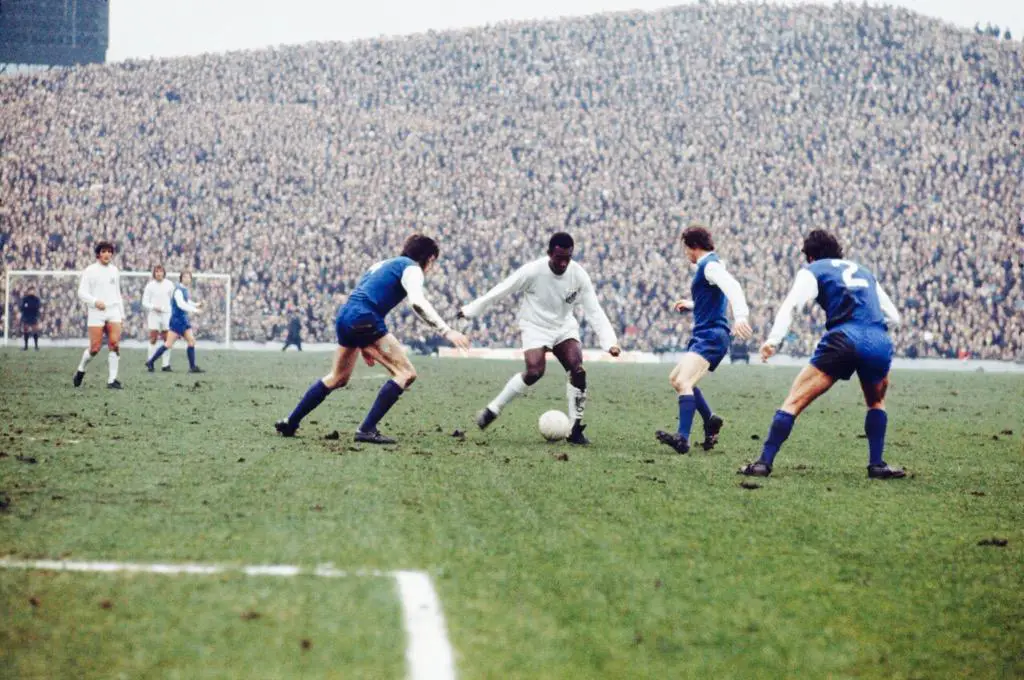
Brazil had won the World Cup, though Pele had been injured from their second Group game. Their first match? Sheffield Wednesday. The Owls were mid-table in the old First Division at the time but would be exposed to Joga Bonito or ‘play beautifully’ before anyone else in England.
When Pelé and the crew sauntered into Sheffield there was an understandable buzz of excitement. A crowd of 50,000 saw the Brazilians win 4-2, the brilliant forward Coutinho stealing the show with a hat-trick whilst Pelé converted a penalty.
At this time people knew of Brazil’s strength, but to see a club side play so incredibly, and to see Pele live made this friendly against middling English side so much more than just a friendly.
It was more than just an exhibition match.
It was a lesson in the beautiful game.
1930 Santos vs France

It’s now used to describe decent teams that could surprise people with performances in a tournament, but we already know everything about their players and play style before they kick off.
As France stopped off in Brazil to face Santos in a friendly, they were hoping to help ease their woes after a disappointing 1930 World Cup in Uraguay.
At this point in history, there was no way of knowing how good a team were going to be if they were outside the continent.
Even then, any team outside a side respective country were usually unknowns. The only way to judge sides was their league position and limited information about the personnel.
Teams expecting easy matches against foreign opposition were routinely shocked when facing sides outside of their footballing bubble.
And when France faced Santos, knowing of the Brazillian national team, who had also had a disappointing World Cup, the game would have naturally been assumed as an expected win.
Brazil was the best of Brazil. Santos was just a Brazillian club.
Their hubris would soon prove to be the French’s downfall…
In a match that would send whispers across Europe of an incredible Brazillian team capable of felling entire nations, Santos ran out 6-1 winners.
It was such an impressive performance, that the French team were convinced they’d been pranked, believing they had played the Brazillian national side in disguise.
An incredulous French squad were adamant in their accusations. Santos invited the French team and coaches to meet the players in their clubhouse to prove they were in fact Santos players.
They were not Brazil in disguise, and France had to accept that maybe they weren’t as good as they thought they were.
At this point in time friendlies were taken very seriously as well, the only real difference between a competitive match being slightly rotated teams and less aggressive challenges, hence the name.
1914 Brazil v Exeter City F.C.
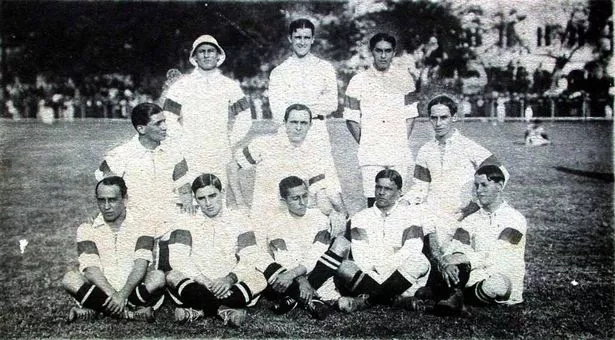
With England being the birthplace of football, the images held in Brazil were that the English were the gods of the sport and it left the locals anticipating a match akin to the flowing, beautiful football they were used to watching.
The players and onlookers were quickly left shocked, as Exeter played an aggressive physical game, showing dreadful on-the-ball ability in comparison to the Brazillians.
Exeter were still tough to beat however, with such emphasis on physicality the Brazillians found them hard to get past.
Especially with far more lenient referees back then were some challenges that would be instant red cards now being deemed entirely legal.
Brazil would triumph in the end, however, winning 2-0, though star player, Arthur Friedenreich, lost two teeth in the game.
In fairness to Exeter, they were just a third-division side, but Brazillian folklore surrounding the home of football had fans everywhere expecting a majestic Exeter display.
I guess this is another case against meeting your idols…
Now, more than a hundred years later, Exeter fans still sing of their historic clash, taunting opposition with chants of “Have you ever played Brazil?”
1991 Japan vs Tottenham
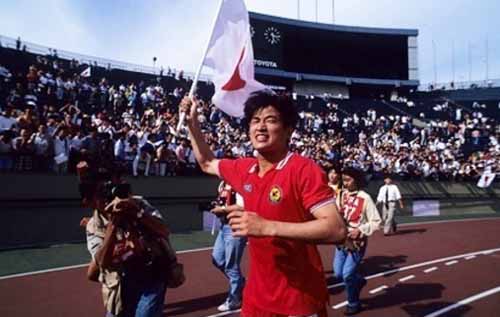
Football hadn’t exploded into popularity, with baseball a much bigger deal. It’s still a huge deal now, but in the 90s baseball was head and shoulders above Football.
Even Sumo Wrestling, Japan’s national sport was more popular than football.
So for this Japanese side to be competitive against even a smaller professional club from a well-established footballing dynasty like England would almost surely prove to be too much.
So when Tottenham headed to Japan to take part in the 1991 Pre-season tournament, The Kirin Cup, they were no doubt expecting an easy trophy to start preparations for the season with a bang.
For the Japanese football fans, this tournament had always been a huge deal. Every year since 1978, teams from established Professional leagues and sometimes other national sides would meet for the Kirin Cup.
It was a chance to see football from places where standards are higher and conversely, it was a chance for those in countries more famed for footballing ability to peer into a nation where very little was known about their football.
Enter Tottenham, in 1991. Previous Kirin Cup winners, having won the second-ever tournament in 1979.
In the lead-up Japan had never won the competition, despite hosting it every year, and with their football league on the fringes of collapse, they were akin to a 4th division English side in theory.
Or so Tottenham fans and players would have thought.
Tottenham proceeded to get absolutely hammered.
A youthful Japanese side carved through them over and over again, as they ran out 4-0 winners, as the Semi-Professional Japanese players made Tottenham look like amateurs.
Crazier still, guess who bagged a brace, scoring for his nation for the first time on his 4th Japan appearance?
Kazuyoshi Miura.
Although its an unofficial national team appearance, the cap or goals are not recognised on his record as they were facing a club side, King Kazu tore Tottenham apart 32 years ago.
As you may know, he’s still playing professional football, currently on an indefinite loan at U.D Oliverense.
Those who might feel the result was meaningless should watch the YouTube highlights of the game.
Japan’s ecstatic faces after each goal showed how important a friendly it was. It was so much more than a practice game England’s representatives were humbled, and Japan went on to win their first Kirin Cup.
It may be another example of a Spurs bottle job, but in Japan, it was a message to the rest of Europe and the world, that even in the modest of league collapse and a small comparative fanbase, Japanese football was not to be underestimated.
As the J-league was born from the collapse of the previous league, in 1993, soccer grew exponentially in popularity across Japan, King Kazu and the Kirin Cup helping grow its audience.
Just a year later, Tottenham player Gary Lineker would famously see out his career in the J-league with Nagoya Grampus.
Argentina vs Carlovich 1974 and Carlovich vs AC Milan 1979

To give a brief summary, a complete no-name (to the rest of the world), utterly destroys the Argentinian national side, playing for a local XI made up of players from Rosario.
He later made AC Milan defenders look like Bambi on Ice while playing for second-division Andes Talleres in 1979.
By far the most incredible example on this list, I’ve covered it in more detail along with the story of the man who made these two games so unbelievable in an article here.
